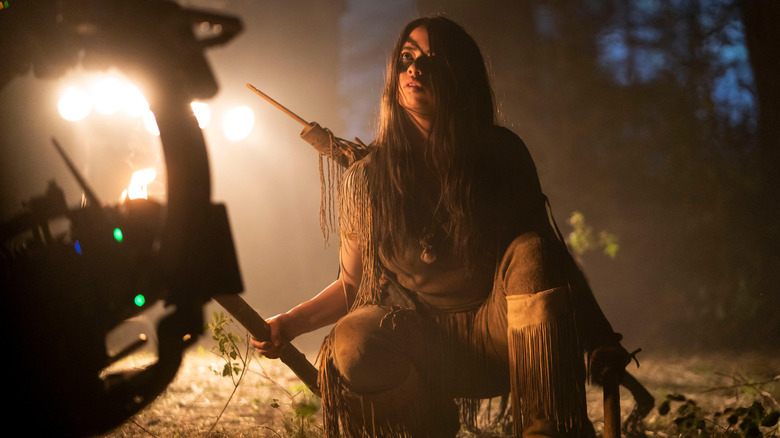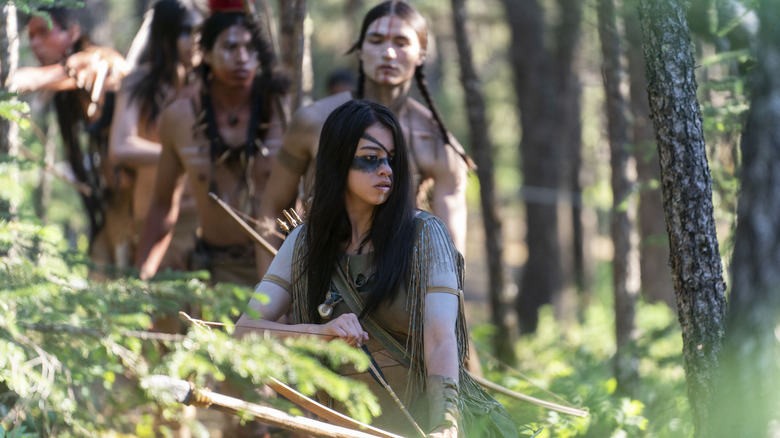Why Director Dan Trachtenberg Put Naru And The Comanche At The Center Of Prey
As exciting and well-made as "Prey" was, it was a major bummer to see it relegated to a straight-to-streaming debut last year (the announcement that it would receive an actual physical media release, which is available to purchase as of today, has helped make up for that a bit). But the film still has plenty going for it that rewards revisiting the action again and again. One of the biggest sources of its appeal, of course, comes from the shrewd casting of Amber Midthunder as our main hero Naru, and the choice to set the story in 1700s America, which allowed for an all-too-rare focus on an Indigenous tribe of Comanches. Drop a seemingly unstoppable Predator into the mix and, well, it's obvious why viewers responded so eagerly to director Dan Trachtenberg's latest effort.
With the 4K, Blu-ray, and DVD release once again putting the film in the news, /Film's Ethan Anderton recently had the chance to talk to the filmmaker about all the factors that went into making "Prey" as tense and thrilling as it turned out to be. At one point in their interview, Trachtenberg addressed his motivation for centering the action on the Comanche. Naturally, part of it came from the idea of paying off on the pistol featured in "Predator 2," but this idea actually went beyond that. According to Trachtenberg:
"I wanted to make a survival tale of someone proving themselves and went to Native American primarily. ... So that and the gender dynamics of that tribe in particular made it essential that it be a Comanche story ... I really didn't want it to be a Western like we so often see Native Americans represented in that time period."
The ultimate underdog story
The best movies in the "Predator" franchise share one thing in common: As capable as they may be, our protagonists should seem like they have absolutely no chance against such a formidable alien. Nobody in good conscience can say "Prey" fails to live up to its billing as the ultimate underdog story. That was a key consideration for director Dan Trachtenberg, along with righting some serious historical wrongs when it comes to the Comanche and Indigenous characters in general. As he put it:
"[I]n thinking of where exactly to put the focus ... [the] Comanche, just in cinema history, have really been at the forefront of all the wrongheaded representation from The Searchers to The Lone Ranger.'"
That explains why "Prey" includes its own twist on the famous John Wayne shot from "The Searchers," although instead of the cowboy's silhouette in the doorframe, we see Naru framed by the edges of her teepee early on. The less said about past casting decisions with Indigenous characters, like having Johnny Depp play Tonto in "The Lone Ranger," the better, but clearly the focus on authenticity in "Prey" helped give immensely charismatic actors like Amber Midthunder and Dakota Beavers the opportunity they deserved.
But there's also the matter of that 18th-century pistol. Because of its 1700s origins, Trachtenberg realized that this lined up perfectly with his impulse to "go back as far as we could" in terms of the setting. One quick look back at "Predator 2" confirmed that he could easily introduce the fur trappers, have them pass on the gun, and tie together the Comanche. Almost like it was meant to be.

